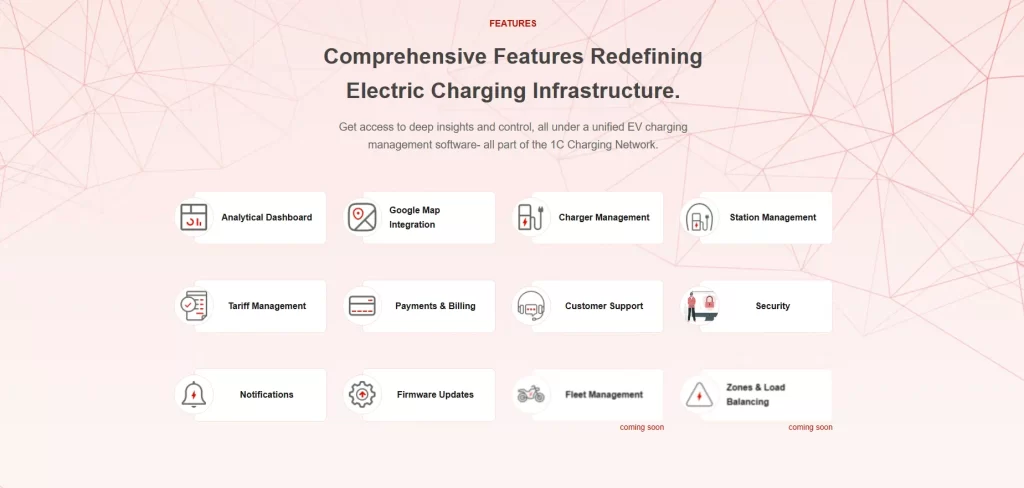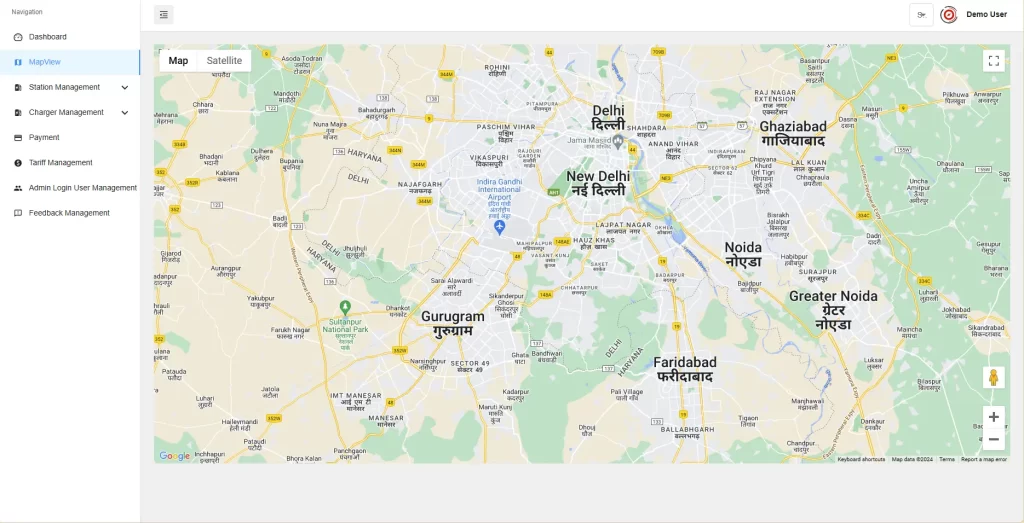Introduction:
The electric vehicle (EV) revolution is rapidly transforming the transportation landscape. However, this shift requires not just a change in vehicles but also the creation of a robust infrastructure to support them. At the heart of this infrastructure lies Charging Management Software (CMS), a vital tool that orchestrates the entire EV charging process.
What is CMS (Charging Management Software):
Think of CMS as the brain behind your charging network. It’s a comprehensive software platform that manages EV charging station operations, from user authentication and billing to load management and energy optimization. Here’s a breakdown of its key functionalities:
- User Management: CMS facilitates user registration, authentication, and access control. This allows station owners to define user groups with varying access privileges and pricing structures.
- Billing and Payment Processing: CMS enables various billing models, such as pay-per-use, duration-based, or energy consumption-based charging. It also integrates with payment gateways for seamless transaction processing.
- Remote Monitoring and Control: Using CMS, operators can monitor the charging station status remotely, initiate or stop charging sessions, and troubleshoot issues.
- Load Management: CMS ensures efficient power distribution by managing charging loads and preventing grid overloads. This is crucial for integrating renewable energy sources into the grid.
- Data Collection and Analytics: CMS gathers valuable data on charging station usage, energy consumption, and user behaviour. This data can be analyzed to optimize infrastructure planning, improve operational efficiency, and inform future decision-making.
The Need for CMS:

The growing adoption of EVs necessitates the widespread deployment of charging stations. However, managing these stations effectively requires a centralized and intelligent system. Here’s why CMS is becoming increasingly essential for various stakeholders in the EV ecosystem:
- Charging Station Operators: CMS empowers operators to remotely manage stations, optimize resource allocation, and generate revenue through various billing models. It also helps ensure regulatory compliance and adherence to safety standards.
- Utility Companies: By enabling load management and grid integration, CMS helps utilities manage electricity demand more effectively and integrate renewable energy sources into the grid.
- Policymakers: CMS can be crucial in promoting EV adoption and achieving sustainability goals. It facilitates data-driven decision-making for infrastructure development and policy formulation.
- EV Owners: A user-friendly CMS empowers EV owners with real-time information on station availability, reservation capabilities, and seamless payment processing. This enhances the overall user experience and encourages wider EV adoption.

Benefits of Implementing CMS
Beyond core functionalities, CMS offers a range of significant benefits for all stakeholders:
- Revenue Generation Opportunities: CMS facilitates various billing models, allowing operators to generate revenue from charging services. They can also leverage dynamic pricing based on demand to maximize profitability.
- Efficient Charging Infrastructure Utilization: By managing station availability and distribution, CMS ensures EV owners can easily find charging stations, reducing wait times and congestion.
- Improved User Experience: Features like real-time availability information, reservation systems, and user-friendly interfaces enhance the user experience for EV owners.
- Scalability and Future-proofing: CMS ensures that charging infrastructure can adapt to a growing number of stations and users. Additionally, it remains compliant with evolving technologies and regulations.
- Smart City Integration: CMS can be integrated with innovative city initiatives to create sustainable and efficient urban environments, coordinating with other infrastructure components like traffic management and energy networks.

Issues with the Current CMS market:
The current EV charging CMS market faces several challenges that must be addressed. Here are some key issues:
- Fragmentation and Lack of Standardization: The EV charging CMS market is fragmented, with numerous vendors offering diverse solutions. It can also make it difficult for operators to manage stations from different vendors under one umbrella.
- Evolving Regulatory Landscape: EV charging infrastructure regulations and data privacy constantly evolve. Some CMS platforms might struggle to keep pace with these changes, potentially putting operators at risk of non-compliance.
- Limited Feature Sets: While many CMS solutions offer core functionalities, some lack advanced features like dynamic pricing models, integration with innovative grid technologies, or comprehensive user management tools. This can limit the flexibility and operational efficiency of charging networks.
- Focus on Proprietary Systems: Some vendors create closed ecosystems with their CMS platforms, limiting third-party hardware and software compatibility. This can restrict operator choice and increase overall costs.

Choosing the Right CMS
Selecting the optimal CMS requires careful consideration of your specific needs and objectives. Here are some critical steps to ensure you choose the right system:
- Define Your Requirements: Start by clearly outlining your goals for the charging infrastructure. Consider the number of stations, expected usage patterns, billing models, and regulatory compliance needs.
- Research Available Solutions: Evaluate different CMS options based on features, functionality, pricing, vendor reputation, and user reviews.
- Compatibility: Ensure compatibility with your charging station hardware, communication protocols, and other relevant equipment.
- Scalability: Choose a system that can grow with your business and accommodate increasing stations and users.
- Ease of Use: Prioritize a user-friendly interface for administrators and EV owners.
- Reliability and Support: Opt for a reputable vendor with a proven track record of reliable service and excellent customer support.
- Security: Prioritize robust security features to safeguard user data and prevent unauthorized access to the charging infrastructure.
- Integration Capabilities: Consider seamless integration with other software systems like energy management and billing platforms.
By following these steps and carefully evaluating your options, you can select a CMS that aligns perfectly with your operational needs and empowers you to achieve your goals for deploying and managing a robust EV charging infrastructure.

Why 1C CMS is the right Choice:
Now that you’re aware of potential issues with the various CMSs on the market, here’s a solution for you: “1C EV Charging CMS.”
With our expertise in EV chargers’ technical and hardware sides, we provide a seamless and user-friendly interface and customization options for various vendors, such as real estate owners, CPOs, Fleet Management companies, and business owners.
Some of the key features in our CMS are:
- Real-time Data management
- Dynamic Pricing
- interoperability
- Load Management
- Cloud Hosted (No need to download app)
- Load Balancing
- Direct UPI payment integration
Get 1C CMS now: Fill Enquiry Form
Conclusion
The widespread adoption of EVs hinges on developing a reliable and efficient charging infrastructure. Charging Management Software (CMS) plays a vital role in this process. CMS empowers various stakeholders to optimize resource allocation, generate revenue, improve user experience, and contribute to a more sustainable future by offering a centralised platform for managing all EV charging operations. As the EV revolution continues to gain momentum, CMS will undoubtedly become an indispensable tool for ensuring a seamless and efficient charging experience for all.












